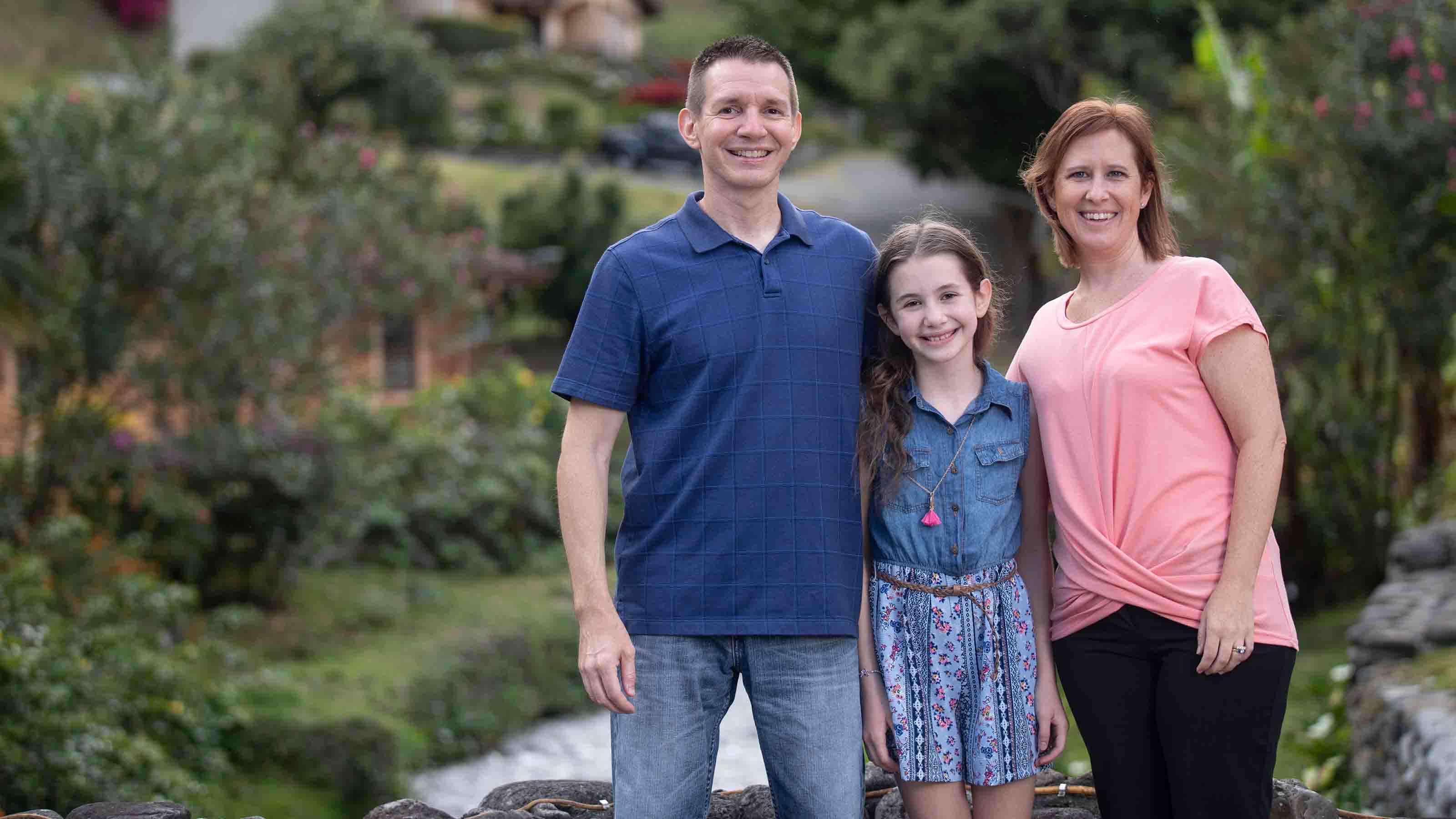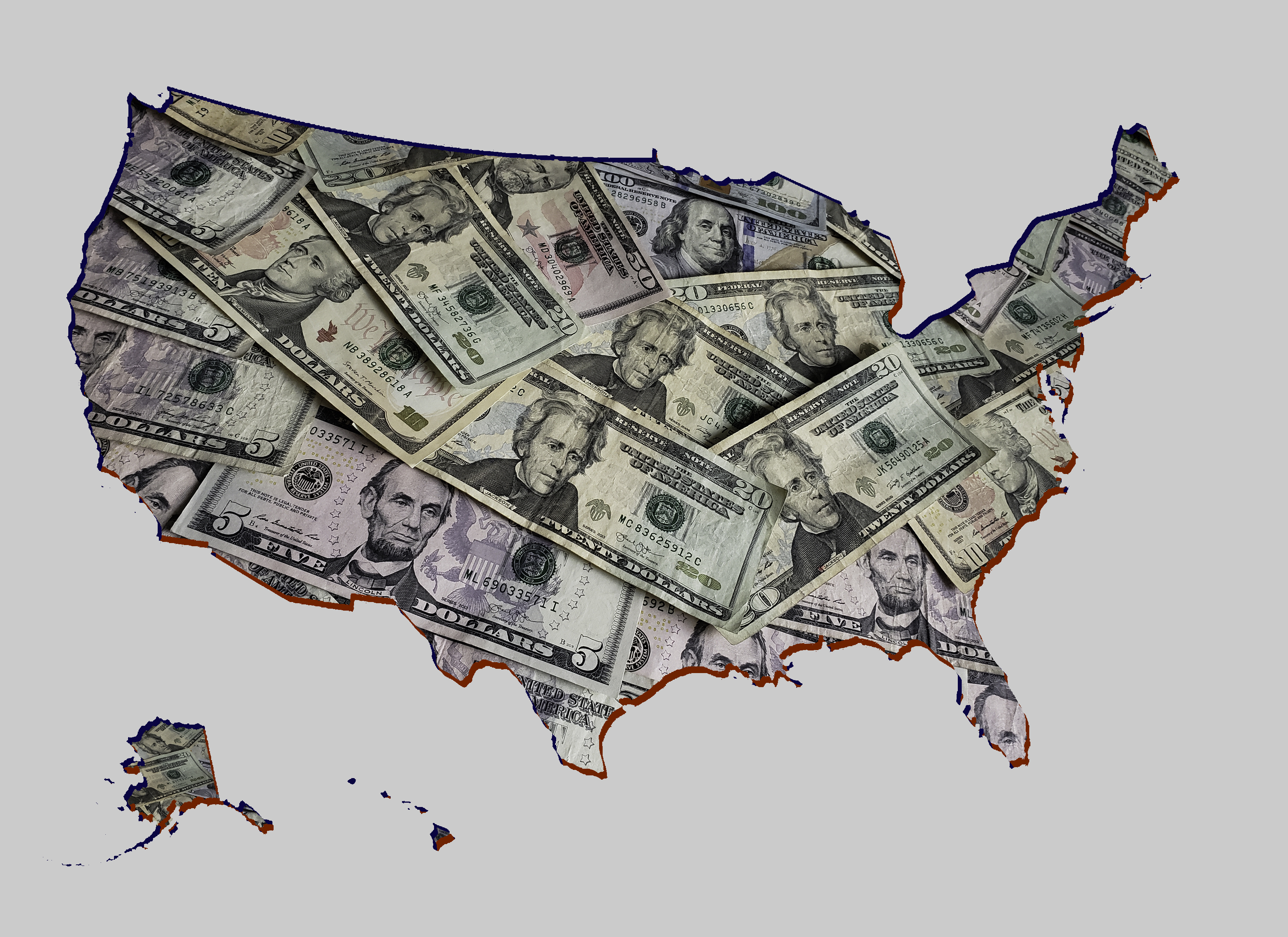The FIRE Movement Is Alive and Well
The pandemic didn’t derail the Financial Independence, Retire Early movement. In fact, it gave it new life.


In the early days of the coronavirus pandemic, some called into question whether the Financial Independence, Retire Early movement would survive the recession and job losses that swept the country. The idea behind FIRE is to save and invest enough money that at an early age, you can live on passive income, making work optional. Joblessness and steep declines in the stock market roughen the road to early retirement.
But two years later, it’s evident that the transformation the pandemic sparked in Americans’ work and personal lives is fueling the movement. As remote work becomes more commonplace, employees are increasingly able to “geo-arbitrage”—live in a location with a lower cost of living while maintaining the same salary, allowing them to save more of their income. Plus, to reduce the spread of COVID-19, many people have stayed home more, spending less on dining out, entertainment and other pursuits. Normally, undergoing such lifestyle changes comes with some social friction. Scott Rieckens, who documented his family’s entry into the movement in the 2019 film Playing With FIRE, knows from experience. “People kind of looked at us weird because we were essentially shifting our identities in front of their eyes,” says Rieckens, 38. “The pandemic gave us all an excuse not to go out and to readjust those social settings.”
And as much as anything else, the pandemic has spurred individuals to evaluate what’s important to them, with some deciding that their job doesn’t make the cut. “Layoffs and re-organizations may have given some people a taste of freedom,” says Pete Adeney, writer of the prominent FIRE blog Mr. Money Mustache. “I think part of the ‘Great Resignation’ we’ve been reading about in the news is people taking early retirements and choosing to stay home with their kids or start something new.”
From just $107.88 $24.99 for Kiplinger Personal Finance
Become a smarter, better informed investor. Subscribe from just $107.88 $24.99, plus get up to 4 Special Issues

Sign up for Kiplinger’s Free Newsletters
Profit and prosper with the best of expert advice on investing, taxes, retirement, personal finance and more - straight to your e-mail.
Profit and prosper with the best of expert advice - straight to your e-mail.
In the past few years, FIRE has also drifted from the mind-set of extreme frugality that was once central to the movement. “FIRE was almost competitive in nature when I first found it,” says Rieckens. Much of the conversation was around drastically cutting back on expenses and speeding toward the “FI date” at which you planned to achieve financial independence; Rieckens’s documentary occasionally flashes to his family’s savings rate and the number of years until they could retire. Today, he and his wife, Taylor, aren’t focused on their FI date. They enjoy their work, and their young daughter is now in elementary school, freeing up more of their time.
Many FIRE devotees place heavier emphasis on the “FI” portion of the acronym. They strive for financial independence so that they can shape their lives around what makes them happy, regardless of whether a paycheck is involved. “Retiring early is one of many possible options that you may or may not choose to pursue,” says Paula Pant, 38, a real estate investor who discusses financial independence on her website and podcast, Afford Anything.
Stoking the FIRE
The FIRE movement traces its roots to the 1992 book Your Money or Your Life, in which authors Vicki Robin and Joe Dominguez—who became financially independent themselves in their twenties and thirties—exhorted readers to define how much money is enough and examine whether their spending supports their values. Especially over the past decade or so, the movement has grown as FIRE acolytes have shared their ideas and experiences on blogs and web forums.
Perhaps the best known of them is Adeney, who retired from his job as a software engineer at age 30 with $600,000 in savings and investments and a paid-off house. Now 47, Adeney continues to keep his expenditures low. His annual spending of about $20,000 includes groceries, household costs, and entertainment for himself and his teenage son—despite an income that could support much higher outlays, thanks to his carpentry hobby and the success of his blog. He donates about $100,000 to charity each year, and with friends he runs a coworking and events space in his town of Longmont, Colo. Although Adeney got divorced in 2018, he and his ex-wife remain financially independent after splitting a comfortable surplus of money. Divorce is “much less stressful if you aren’t also fighting over money with your former spouse,” says Adeney.
At its core, FIRE is about “prioritizing happiness, health, family and friends, hard work, connection with nature, and a certain amount of simplicity instead of just focusing on getting rich,” says Adeney. (read our 2018 profile on Adeney.)
Plan for Retirement Income
The FIRE movement burns on heady notions of living on your own terms, but it’s grounded in the realities of financial discipline. Headwinds can quickly snuff out a FIRE strategy that is inflexible or unprepared for challenges.
To start, the standard advice within the movement is to determine the amount of annual spending you expect to have in retirement and save about 25 times that figure, allowing you to use the 4% withdrawal rule to cover your expenses without running out of money. If you have $1 million invested, for example, the 4% rule allows you to take out $40,000 the first year. Each year thereafter, you increase the amount withdrawn by the previous year’s inflation rate.
If your plan is to leave a stable job but stay engaged enough in your field that you can earn some income from work, a 4% withdrawal target “can work quite well, with the caveat that life is uncertain,” says Anne Lester, retirement expert and former head of retirement solutions for J.P. Morgan Asset Management. That uncertainty is magnified for those who retire in their thirties or forties and likely have several decades of life ahead. And the 4% rule assumes an expected retirement of 30 years; an early retiree may be withdrawing money for 50 years or more.
High inflation and a volatile stock market are two other challenges that could threaten your savings and spending power in the future—and those threats are no longer theoretical. FIRE flourished during a historic bull market, and the youngest members of the movement haven’t experienced a prolonged market decline in their adult lives. Nor has rapid inflation previously been a concern for them. If inflation persists or the market goes into an extended decline, dialing back the withdrawal rate to, say, 3.5% may be necessary during some years.
You can also build protection into your investment portfolio. Investments that typically hold up well against inflation include commercial real estate, emerging-market and small-capitalization stocks, gold, and Treasury inflation-protected securities (TIPS). Bonds provide balance during bear markets because their values tend to rise when stock prices fall.
Cash holdings are a poor inflation hedge, but having at least two to three years’ worth of living expenses in cash can help younger retirees weather a down market so they can avoid pulling from their stock portfolio, Lester says.
A financial planner can review your plan and point out any holes. “The FIRE crowd needs to stress-test their finances with ‘what if’ scenarios,” says Noah Damsky, a chartered financial analyst in Los Angeles. That means running projections such as higher tax rates, elevated and prolonged inflation, and major stock market drawdowns. Planners in the XY Planning Network focus on Generation X and millennial clients, require no asset minimums and are fee-only, which means they don’t accept commissions for selling financial products.
Diversify your income
Real estate investing is a popular way that FIRE followers add an alternative stream of passive
income. Pant, the real estate investor, saved money from her day job to buy a building with three housing units and lived in one while renting out the other two. She continued to buy more properties, and she currently owns seven paid-off homes, drawing about $60,000 to $70,000 annually in residual income. She also has a sizable stock market portfolio.
Nationwide, home prices have increased by leaps and bounds, with an 18.8% annual gain in November, according to the S&P CoreLogic Case-Shiller National Home Price Index. That raises the barrier to entry for those who want to invest in real estate. Pant recommends buying homes in areas with favorable price-to-rent ratios for landlords, such as Indianapolis, Cleveland and Dayton. “Don’t make the mistake of thinking you need to invest in your backyard,” she says. And before you dive in, consider whether you’re ready to take on the headaches and costs that can come with owning properties. You’ll have to account for improvements and repairs, plus fees for property management if you hire help.
Being willing and able to re-enter the workforce will provide ballast. It’s wise to stay engaged in a professional field to be able to generate more income, if necessary, perhaps by consulting or writing, says Lester. If you’re more focused on the financial independence aspect than on kicking back into a traditional version of retirement, maintaining a skill shouldn’t be much of a burden—especially if it’s something you love to do.
Boost Your Savings
The precursor to the question of how you’ll ensure adequate income after you retire is how you’ll save enough money to produce it—especially on an accelerated time line. To accumulate a $1 million nest egg over a career of 40 years, you need to save $379 a month, assuming a 7% return on investments, says Joe Buhrmann, senior financial planning consultant at Fidelity’s eMoney Advisor. To save $1 million in half that time with the same return, you’d need to set aside
$1,847 a month.
Taking a close look at your spending and trimming unnecessary expenses is par for the course when you want to raise your savings rate. But increasing your income may be just as important—especially if you’re trying to set aside half of it or more, as many FIRE proponents aim to do. That’s the strategy Cinneah El-Amin, 27, is using on her path to financial independence. A product manager in financial services, she has quadrupled her annual income from $48,000 at her first job in 2017 by gaining promotions and switching to higher-paying jobs. With a goal of becoming a millionaire by 2030, she saves about half of her income.
When she’s not busy with her day job, she shares her journey and advice with others through her website and business, Flynanced. Traveling is her passion, and she focuses on living well while she attains financial independence. Ultimately, she sees herself moving abroad and continuing to expand her own business ventures, even after she reaches her financial goals.
Picking up a side hustle or two is another way to boost income. Amon and Christina Browning, who were 39 and 41 when they retired from their jobs as federal government employees in 2019, supplemented their savings by selling on Facebook Marketplace and Craigslist gently used or discontinued items they purchased at a discount from IKEA’s “as is” section, along with wine boxes, shelves and other furniture that they built from pallets. They also purchased fixer-upper homes and lived in them while they did renovations, then sold them for a profit. At one point, they were saving about 70% of their total income. Now, the Brownings live in Portugal with their teenage daughters and cover their living expenses with income from an Airbnb rental that they own. They chronicle their journey and offer advice at ourrichjourney.com.
Relocating to a foreign country with a lower cost of living is a way to minimize expenses in retirement, reducing the amount that you need to save. That’s one reason Jim White, 46, writer of the FIRE blog Route to Retire, moved to Panama with his wife, Lisa, 44, and daughter, Faith, 11, after he retired in 2018 from his career in information technology. Although his family enjoys the climate and relaxed pace of life Panama has to offer, they’re moving back to their hometown of Cleveland this spring to be closer to family and seek more extracurricular opportunities for Faith. But because they don’t have to worry about taking time off from a job, they eventually can return to Panama for extended visits—especially during Cleveland winters.
Allocate your savings
Those who may want to tap their investments before a typical retirement age should give special
consideration to where they direct their savings and how they’ll withdraw it. Stashing funds in tax-advantaged accounts such as 401(k)s and IRAs is a solid retirement strategy, and it’s smart to put at least enough in a 401(k) to capture any contribution match that your employer offers. But usually, you face a 10% penalty if you remove funds from a traditional, tax-deferred 401(k) or IRA before age 59 1/2. Money that you put in a Roth IRA, however, has already been taxed, and you can pull out contributions at any time without taxes or penalties (though any investment earnings that you withdraw before 59 1/2 are subject to income tax and a 10% penalty). Beefing up a taxable brokerage account is a good way to ensure that you’ll have money that benefits from market growth but is accessible without age restrictions.
White, who retired with $1.2 million and now has a net worth of $1.6 million thanks to investment returns, put the majority of his savings in his 401(k). He and his wife are in the process of converting their 401(k) funds to Roth IRAs, paying income tax now on the amount converted. But he must wait five years before he can withdraw the converted money without penalty, so in the meantime, his family is living on money invested in a bond fund ladder. Each year, they move about $50,000 from their bond portfolio into an easily accessible savings account.
Make Up for Missed Benefits
If you’re fully retired or working for yourself rather than an employer, health care can be a major expense until you’re 65 and are eligible for Medicare. Employers that offer a health insurance benefit subsidize the cost. If you’re married and your spouse still has a job with health benefits, getting on that plan may be the most cost-effective choice.
Otherwise, you can explore your options on the government’s health care exchange or the private market. One strategy is to keep your income low enough to qualify for a premium tax credit through the health care exchange. Some choose to investigate health-sharing organizations, insurance offered through trade or professional memberships, or alternative models of receiving and paying for care. Adeney, of the Mr. Money Mustache blog, has a high-deductible plan with Sedera, which pools funds from its members to cover large, unexpected medical costs such as hospitalizations. He also pays a medical practice a monthly fee under a direct primary care model, through which he gets services for most of his basic medical needs. Altogether, he spends about $260 a month. Because he’s healthy, he feels the coverage is sufficient, but he acknowledges the arrangement might not work as well for someone with chronic health problems.
If you’re not earning any income from work, you won’t pay Social Security tax, and that will shrink the Social Security check you’ll receive when you’re old enough to claim benefits. For many younger folks, Social Security is a nonstarter because they believe that funding shortfalls will reduce or eliminate benefits by the time they’re in their sixties or seventies.
In reality, Social Security is likely to remain, although benefits may look different in a few decades (for more, see Shoring Up Social Security). Plus, “Social Security has two features that are incredibly valuable: inflation adjustments and a government guarantee,” says Justin Pritchard, a certified financial planner in Montrose, Colo. Still, it’s not a bad idea to plan for retirement as though Social Security won’t be there and consider any benefits you do earn an added perk.
Another consideration for those who leave behind a job that comes with a W-2 form: Qualifying for loans or anything else that typically relies on standard earnings can be complicated. Julien and Kiersten Saunders, ages 41 and 37, who are self-employed and share their FIRE story at richandregular.com, have experienced it firsthand. “We tried to refinance our mortgage to take advantage of low interest rates, and that process was incredibly difficult because our business didn’t have enough history of income at the time,” says Kiersten.
A final benefit of working is the sense of purpose it can give you. As you plan your retirement, make sure that you’re retiring for reasons that go beyond escaping a toxic or unstimulating work environment. Whether individuals retire early or at the traditional age, “after a while, retirement doesn’t seem as rewarding if they don’t have something they are really looking forward to that can fill their days,” says Christina Browning, the retiree who lives in Portugal. Says her husband, Amon, “Some people choose to retire early because they’re running from something. We were running toward something.”
The Elements of FIRE
Many of the Financial Independence, Retire Early movement’s central tenets boil down to best practices that you can incorporate into your own retirement strategy, even if you don’t plan to leave the workforce early.
- Determine your FIRE number—the amount you need to save to generate sufficient income in retirement. The rule of thumb is to multiply your annual expenses by 25. (For more on finding your retirement savings target, see What's Your Retirement Number?)
- Track your spending and cut unnecessary expenses.
- Boost your income by seeking promotions or switching jobs, or add a side hustle.
- Pay off debt—especially high-interest debt, such as from credit cards.
- Save a big chunk of your income (FIRE savers typically aim for 50% to 70%).
- Create an emergency fund to cover unexpected expenses.
- Maximize savings in tax-advantaged accounts, such as 401(k)s, IRAs and health savings accounts.
- Invest in low-fee index funds.
What Type of FIRE Are You?
Financial Independence, Retire Early adherents have their own lingo to describe the varying approaches.
- Lean FIRE is for frugal individuals who keep their expenses low and live on minimal income—often less than $40,000 a year.
- Fat FIRE enthusiasts prefer a higher standard of living and may need annual income of $100,000 or more to support their lifestyle.
- Barista FIRE describes those whose savings aren’t quite sufficient to retire, so they work part-time, gaining additional income and perhaps health insurance benefits.
- Coast FIRE means that you have saved enough that you will be able to retire at a traditional age without contributing more money to your retirement accounts. Until then, you can coast along covering current expenses, which may allow the freedom to switch to part- time work or explore new ventures.
- Slow FI, as defined by the blog The Fioneers, involves a goal of financial independence but with a focus on enjoying the journey, rather than making big lifestyle sacrifices in the race to a savings target.
Profit and prosper with the best of Kiplinger's advice on investing, taxes, retirement, personal finance and much more. Delivered daily. Enter your email in the box and click Sign Me Up.

Lisa has been the editor of Kiplinger Personal Finance since June 2023. Previously, she spent more than a decade reporting and writing for the magazine on a variety of topics, including credit, banking and retirement. She has shared her expertise as a guest on the Today Show, CNN, Fox, NPR, Cheddar and many other media outlets around the nation. Lisa graduated from Ball State University and received the school’s “Graduate of the Last Decade” award in 2014. A military spouse, she has moved around the U.S. and currently lives in the Philadelphia area with her husband and two sons.
-
 Visa Stamps the Dow's 398-Point Slide: Stock Market Today
Visa Stamps the Dow's 398-Point Slide: Stock Market TodayIt's as clear as ever that President Donald Trump and his administration can't (or won't) keep their hands off financial markets.
-
 State Tax Changes 2026: Is Your State Cutting Taxes This Year?
State Tax Changes 2026: Is Your State Cutting Taxes This Year?Tax Changes As a new year begins, taxpayers across the country are navigating a new round of state tax changes.
-
 Who Said That? Match the US President to the Quotation
Who Said That? Match the US President to the QuotationWho better to give advice on aging, retirement and finances than a U.S. president? Our short quiz will determine whether you're a history buff or buffoon.
-
 States That Tax Social Security Benefits in 2026
States That Tax Social Security Benefits in 2026Retirement Tax Not all retirees who live in states that tax Social Security benefits have to pay state income taxes. Will your benefits be taxed?
-
 What to Do With Your Tax Refund: 6 Ways to Bring Growth
What to Do With Your Tax Refund: 6 Ways to Bring GrowthUse your 2024 tax refund to boost short-term or long-term financial goals by putting it in one of these six places.
-
 What Does Medicare Not Cover? Eight Things You Should Know
What Does Medicare Not Cover? Eight Things You Should KnowMedicare Part A and Part B leave gaps in your healthcare coverage. But Medicare Advantage has problems, too.
-
 12 Great Places to Retire in the Midwest
12 Great Places to Retire in the MidwestPlaces to live Here are our retirement picks in the 12 midwestern states.
-
 15 Cheapest Small Towns to Live In
15 Cheapest Small Towns to Live InThe cheapest small towns might not be for everyone, but their charms can make them the best places to live for plenty of folks.
-
 15 Reasons You'll Regret an RV in Retirement
15 Reasons You'll Regret an RV in RetirementMaking Your Money Last Here's why you might regret an RV in retirement. RV-savvy retirees talk about the downsides of spending retirement in a motorhome, travel trailer, fifth wheel, or other recreational vehicle.
-
 The 24 Cheapest Places To Retire in the US
The 24 Cheapest Places To Retire in the USWhen you're trying to balance a fixed income with an enjoyable retirement, the cost of living is a crucial factor to consider. Is your city the best?
-
 The Six Best Places to Retire in New England
The Six Best Places to Retire in New Englandplaces to live Thinking about a move to New England for retirement? Here are the best places to land for quality of life, affordability and other criteria.